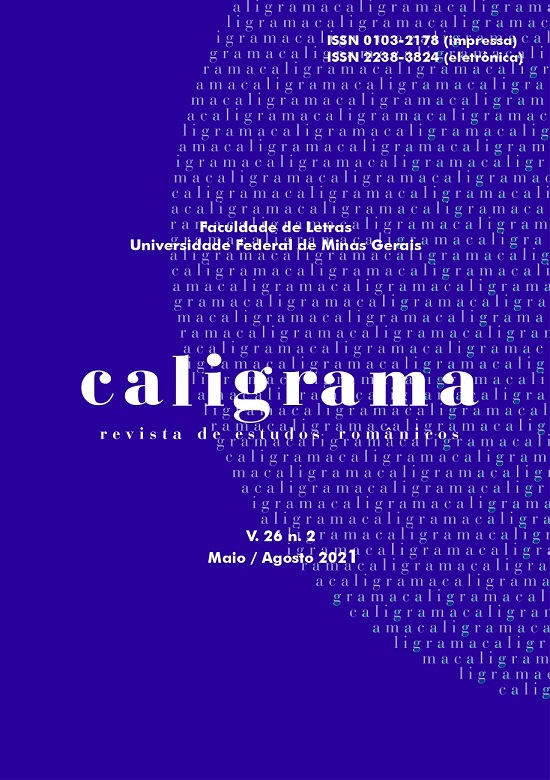Online Sentence Processing During Reading of Temporally Ambiguous Gapping Sentences in Brazilian Portuguese
DOI :
https://doi.org/10.17851/2238-3824.26.2.67-87Mots-clés :
Sentence Processing, Ellipsis, Gapping, Brazilian PortugueseRésumé
This article aims to explore whether the online sentence processing of gapping sentences, with a temporary ambiguous DP at the second conjunct, such as “Beatriz baked a pizza and Carla a lemon cake for snack”, is more costing in terms of time course in comparison to other two coordinated sentences, coordinate with conjoined object such as “Beatriz baked a pizza and a lemon cake for snack in the afternoon”, and coordinate with conjoined clauses without ellipsis, such as “Beatriz baked a pizza and Carla made a lemon juice”. A Self-Paced Reading task in moving-window fashion was carried out with native speakers of Brazilian Portuguese. The results seem to indicate that temporary ambiguous DP and the resolution of the ellipsis site were more costly to process int comparison to the other two coordinated sentences.
Références
BAYEN, R. H. Analyzing linguistic data: A practical introduction to
statistics. Cambridge: Cambridge University Press, 2008.
BAYEN, R. H.; DAVIDSON, D. J.; BATES, D. M.. Mixed-effects
modeling with crossed random effects for subjects and items. Journal
of Memory and Language, 59, 2008, p. 390-412.
CARLSON, K. Parallelism and Prosody in the Processing of Ellipsis
Sentences. New York: Routledge, 2002.
CITKO, B. Symmetry in Syntax: Merge, Move and labels. Cambridge:
Cambridge University Press, 2011.
CLIFTON JR C.; TRAXLER, M. J.; MOHAMED, M. T.; WILLIAMS, R. S.;
MORRIS, R. K.; RAYNER, K. The use of thematic role information in
parsing: Syntactic processing autonomy revisited. Journal of Memory
and Language, 49, 2003, p. 317-334.
FERREIRA F.; CLIFTON JR C.. The independence of syntactic
processing. Journal of Memory and Language, 25, 1986, p. 348-368.
FRAZIER, L. Sentence processing: A tutorial review. In: COLTHEART,
M. Attention and performance XII. Hillsdale, NJ: Lawrence Erlbaum
Associates, 1987a. p. 559-585.
FRAZIER, L. Syntactic processing: Evidence from Dutch. Natural
Language and Linguistic Theory, 5, 1987b, p. 519-559.
Caligrama, Belo Horizonte, v. 26, n. 2, p. 67-87, 2021.
FRAZIER, L. Ellipsis and Psycholinguistics. In: VAN CRAENENBROECK,
J.; TEMMERMAN, T. The Oxford Handbook of Ellipsis. New York:
Oxford University Press, 2019. p. 253-275.
HOEKS, J. C. J.; HENDRIKS, P.; VONK, W.; BROWN, C. M.; HAGOORT, P.
Processing the noun phrase versus sentence coordination ambiguity:
Thematic information does not completely eliminate processing difficulty.
The Quarterly Journal of Experimental Psychology, 59, 2006, p.
-1599.
HOEKS, J. C. J.; VONK, W.; SCHRIEFERS, H. Processing Coordinated
Structures in Context: The Effect of Topic-Structure on Ambiguity
Resolution. Journal of Memory and Language, 46, 2002, p. 99-119.
JIANG, N. Conducting reaction time research in second language
studies. New York, NY: Routledge, 2012.
JOHNSON, K.. Gapping and Stripping. In: VAN CRAENENBROECK,
J.; TEMMERMAN, T. The Oxford Handbook of Ellipsis. New York:
Oxford University Press, 2019, p. 562-604.
KAAN, E.; OVERFELT, C.; TROMP, D.; WIJNEN, F. Processing Gapped
Verbs. Journal of Psycholinguistic Research, 42, 2013, p. 307–338.
KAAN, E.; WIJNEN, F.; SWAAB, T. Y.. Gapping: Electrophysiological
evidence for immediate processing of ‘‘missing’’ verbs in sentence
comprehension. Brain and Language, 89, 2004, p. 584-592.
KAISER, E. Experimental paradigms in psycholinguistics. In: PODESVA,
R. J.; SHARMA, D. Research Methods in Linguistics. Cambridge:
Cambirdge University Press, 2013, p. 135-168.
KIM, N.; CARLSON, K.; DICKEY, M.; YOSHIDA, M.. Processing
gapping: Parallelism and grammatical constraints. Quarterly Journal
of Experimental of Psychology, 73, n. 5, 2020, p. 781-798.
MERCHANT, J. The syntax of silence: Sluicing, Islands, and the Theory
of Ellipsis. Oxford: Oxford University Press, 2001.
PHILIPS, C.; PARKER, D. The psycholinguistics of ellipsis. Lingua,
, 2014. 78-95.
R CORE TEAM. R: A language and environment for statistical computing,
Disponível em: http://www.r-project.org/index.html. Acesso em:
mar. 2021.
REPP, S. Negation in Gapping. Oxford: Oxford University Press, 2009.
ROSS, J. R. Constraints on variables in syntax. Cambridge, MA:
Massachusetts Institute of Technology, 1967.
SAG, I. Deletion and logical form. New York: Garland Publishing, 1980.
STOWE, L. A.; KAAN, E.; SABOURIN, L.; TAYLOR, R. C.. The
sentence wrap-up dogma. Cognition, 176, 2018, p. 232-247.
TEAM, R. C. R: A language and environment for statistical computing.
R Foundation for Statistical Computing, 2020.
TRUESWELL, J. C.; TANENHAUS, M. K.; GARNSEY, S. M.. Semantic
influences on parsing: Use of thematic role information in syntactic
ambiguity. Journal of Memory and Language, 33, 1994, p. 285-318.
da SILVA, A. C. O.; FONSECA, A. A.; de CARVALHO, L. L.
Processamento de estruturas coordenadas com elipse no Português
Brasileiro. Letras de Hoje, 53, n. 1, 2018, p. 130-139.
YOSHIDA, M. Parsing Strategies. In: VAN CRAENENBROECK, J.;
TEMMERMAN, T. The Oxford Handbook of Ellipsis. New York:
Oxford University Press, 2019, p. 444-457.
ZEHR, J.; SCHWARZ, F. PennController for Internet Based Experiments
(IBEX), 2018. Disponivel em: https://doi.org/10.17605/OSF.IO/
MD832.





